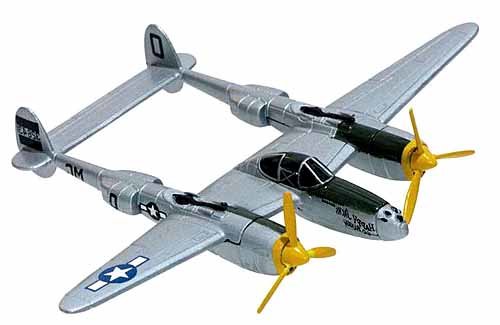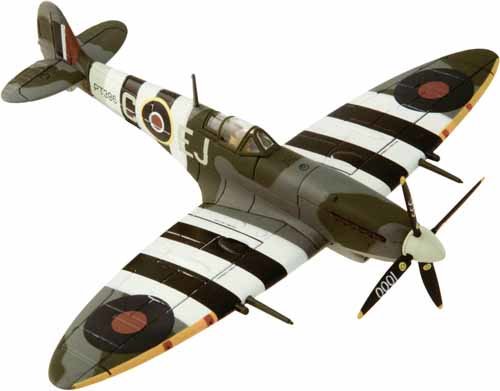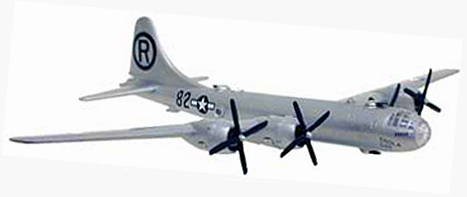World War 2 model airplanes give you a visible representation of the fighting machines used over the skies of Britain, Europe, North Africa, Central Asia and over the Pacific. These intricate model planes aren’t the plastic Tamoya kits that you may remember from the late ’70s and early 80s. Instead, these are often die cast or hand crafted out of wood or cold cast porcelain to capture all the details of such vintage planes as the Warhawk and the Lightning.
There are several interesting scales of World War 2 model airplanes to work from; from the largest (at 1:12, where one foot on the plane equals one inch on the models) to the more common 1:40 scale, and the smaller 1:70 scale. These can come pre-assembled and painted, but most of the people who take up militaria modeling as a hobby like the prospect of painting up their own World War 2 model airplanes. They get to paint on the color schemes and do the insignia, and by doing so, these model plane fanciers can get in touch with a deeper appreciation of history.
World War 2 model aircraft cover virtually every make and model of plane flown during the war, from unarmed transport planes like the DC 3, which flew more miles in the air than any other airplane during that decade, to the “high glitz” fighters like the P-51 Mustang and the P-47 Thunderbolt for the United States Army Air Force, to the comparatively obscure World War II planes like the Ku 126, and the Il-82 flown by the Soviet Air Force.
All of these planes had different performance ceilings and tactical envelopes; for example, the Mitsubishi A9 (commonly called the Zero) is still the most maneuverable aerobatic plane in its weight class, over 60 years since it was first introduced. The competing F4 Corsairs flown by the US Navy were faster, had more powerful engines and a higher operating ceiling but would lose (and lose badly) if they engaged the Zero in a turning duel. Dynamic posing of World War 2 model airplanes can show the relative advantages and disadvantages of both.
Different nations prioritized different aspects when designing fighters. The United States focused heavily on engine power and durability; most US planes traded maneuverability for robustness when compared to their German and Japanese counterparts. Russian planes, which are hard to find good World War 2 model plane copies of, tended to be lighter and maneuverable, but built for ease of maintenance and rapid construction. All of these model planes are available on the market now, in a variety of scales.
Even on the toy scale, there are interesting choices, such as Fantasy Flight Games’ models for Flames of War, a lightweight miniatures combat game suitable for children. Abstracting away three dimensional movement, Flames of War provides gorgeous pre-painted 1:144 scale models of Word War 2 fighting planes, and are excellent for collectors and game enthusiasts alike. Other common scales for World War 2 model aircraft include the 1:285 scale that matches “micro-armor” tanks, the very similar 1:300, the harder to find 1:350 scale, and the “pick them up with tweezers” 1:700 scale used for modeling planes on carrier decks.
Whatever your desire, there’s a set of World War 2 model airplanes that will suit your fascination with history.


